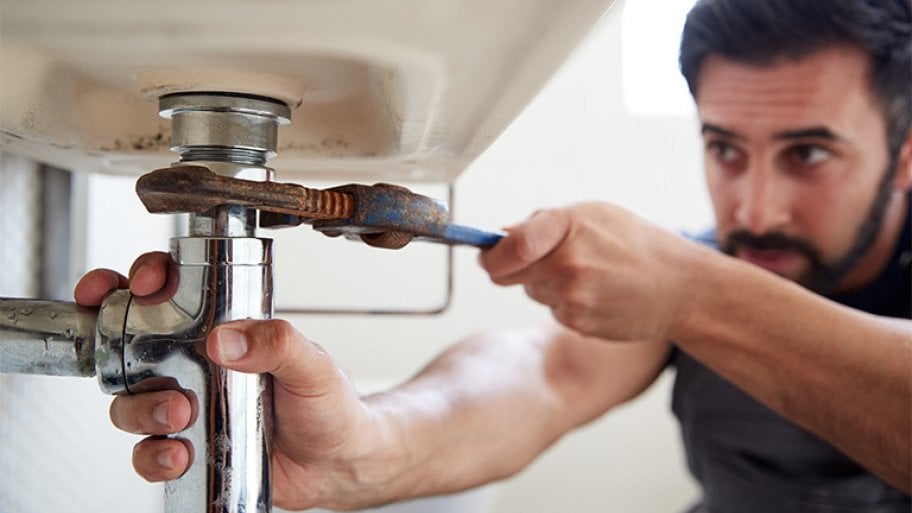Just how do you feel in relation to Why Your Water Pipes Are Noisy and How To Shut Them Up?

To identify noisy plumbing, it is very important to determine first whether the unwanted noises happen on the system's inlet side-in other words, when water is turned on-or on the drain side. Noises on the inlet side have actually varied causes: excessive water pressure, used shutoff as well as faucet components, incorrectly linked pumps or other home appliances, inaccurately put pipe fasteners, and also plumbing runs including way too many limited bends or other restrictions. Sounds on the drainpipe side typically stem from poor location or, just like some inlet side noise, a layout consisting of limited bends.
Hissing
Hissing sound that happens when a faucet is opened somewhat generally signals too much water pressure. Consult your neighborhood water company if you believe this problem; it will certainly be able to tell you the water pressure in your location as well as can mount a pressurereducing valve on the incoming water system pipeline if necessary.
Thudding
Thudding noise, often accompanied by shuddering pipes, when a tap or device shutoff is switched off is a problem called water hammer. The sound and also vibration are caused by the reverberating wave of pressure in the water, which all of a sudden has no location to go. In some cases opening a valve that discharges water rapidly into an area of piping having a limitation, arm joint, or tee installation can create the same problem.
Water hammer can usually be cured by installing installations called air chambers or shock absorbers in the plumbing to which the trouble valves or taps are connected. These devices allow the shock wave created by the halted flow of water to dissipate in the air they contain, which (unlike water) is compressible.
Older plumbing systems may have brief upright areas of capped pipeline behind walls on faucet runs for the very same purpose; these can at some point full of water, lowering or ruining their efficiency. The remedy is to drain pipes the water supply completely by turning off the main water valve as well as opening all taps. Then open up the main supply shutoff and also shut the faucets one at a time, beginning with the faucet nearest the shutoff and also finishing with the one farthest away.
Chattering or Shrilling
Intense chattering or screeching that occurs when a shutoff or tap is activated, which typically goes away when the installation is opened completely, signals loosened or malfunctioning inner parts. The remedy is to change the shutoff or faucet with a brand-new one.
Pumps and also appliances such as cleaning equipments and also dishwashers can transfer motor noise to pipes if they are poorly attached. Link such products to plumbing with plastic or rubber hoses-never inflexible pipe-to isolate them.
Other Inlet Side Noises
Squeaking, squealing, scraping, snapping, as well as touching generally are brought on by the development or contraction of pipes, normally copper ones providing hot water. The sounds take place as the pipes slide against loose bolts or strike close-by home framework. You can usually determine the area of the trouble if the pipelines are exposed; just comply with the audio when the pipelines are making sounds. Probably you will uncover a loosened pipeline hanger or a location where pipelines lie so near floor joists or other mounting items that they clatter against them. Affixing foam pipeline insulation around the pipelines at the point of get in touch with should fix the issue. Be sure straps as well as hangers are protected and also offer adequate assistance. Where feasible, pipe fasteners ought to be attached to huge structural aspects such as foundation walls instead of to framing; doing so minimizes the transmission of vibrations from plumbing to surfaces that can amplify as well as move them. If attaching fasteners to framework is unavoidable, wrap pipelines with insulation or various other resistant material where they call bolts, and sandwich the ends of new fasteners in between rubber washing machines when mounting them.
Remedying plumbing runs that suffer from flow-restricting limited or various bends is a last option that ought to be undertaken just after getting in touch with a knowledgeable plumbing contractor. Unfortunately, this scenario is fairly usual in older residences that might not have been built with interior plumbing or that have actually seen a number of remodels, especially by novices.
Drain Noise
On the drain side of plumbing, the principal objectives are to remove surfaces that can be struck by dropping or hurrying water and to shield pipes to consist of inescapable sounds.
In new building, bathtubs, shower stalls, commodes, and also wallmounted sinks and also basins should be set on or versus durable underlayments to lower the transmission of sound with them. Water-saving toilets and also taps are much less loud than conventional models; mount them as opposed to older kinds even if codes in your location still permit utilizing older fixtures.
Drains that do not run up and down to the basement or that branch into straight pipeline runs supported at floor joists or other mounting present specifically frustrating noise issues. Such pipelines are huge sufficient to emit considerable vibration; they additionally lug substantial amounts of water, which makes the scenario worse. In new construction, define cast-iron dirt pipes (the large pipes that drain commodes) if you can manage them. Their massiveness has a lot of the noise made by water going through them. Likewise, stay clear of transmitting drains in walls shown bed rooms and also spaces where individuals gather. Wall surfaces including drains need to be soundproofed as was defined earlier, using double panels of sound-insulating fiber board and wallboard. Pipes themselves can be covered with unique fiberglass insulation made for the function; such pipelines have an impervious vinyl skin (often having lead). Outcomes are not always acceptable.
If Your Plumbing is Making These Sounds, There’s a Problem
A Bang or Thump When You Turn Off a Faucet
If a loud bang or thump greets you each time your turn off running water, you likely have a water hammer. A water hammer occurs when the water velocity is brought to a halt, sending a shock wave through the pipe. It can be pretty jarring — even worse, damaging to your plumbing system. All that thudding could loosen connections.
Strange Toilet Noises
You’re so familiar with the sounds your toilet makes that your ears will be attuned to anything out of the ordinary. Fortunately, most unusual toilet noises can be narrowed down to just one of several problems.
Foghorn sound:
Open the toilet tank Flush the toilet When you hear the foghorn noise, lift the float to the top of the tank If you’re ambitious, you can remove the ballcock valve and disassemble it to replace the washer. Or you can more easily replace the ballcock valve entirely. This device is relatively inexpensive and available at most any hardware store.
Persistent hissing:
The hissing following a flush is the sound of the tank filling. It should stop once the tank is full. But if the hissing continues, it’s likely because water is leaking out of the tank. The rubber flap at the bottom of the tank can degrade, letting water slip through and into the bowl. That’s why the tank is refilling continuously. Fortunately, this is an easy fix:
Cut the water to the toilet by closing the shutoff valve on the water supply line. Flush the toilet to drain the tank. Disconnect the flapper Attach the new flapper Gurgling or bubbling:
Gurgling or bubbling suggests negative air pressure in the drain line, likely resulting from a clog. As air releases, it causes the water in the toilet to bubble. This could either be a minor issue or a major one, depending on the clog’s severity. Clogs can be caused by toilet paper or more stubborn obstructions such as tree roots. If you can’t work out the clog with a plunger, contact a professional plumber for assistance because a clog of this magnitude could lead to filthy and unsanitary sewage backups in your sink bathtub.

As a reader about Why Your Water Pipes Are Noisy and How To Shut Them Up, I think sharing that piece of writing was worth the trouble. Do you know about anybody else who is serious about the subject? Do not hesitate to share it. Thank you so much for going through it.
Don't delay, ring today!
 Kel Mitchell Then & Now!
Kel Mitchell Then & Now! Neve Campbell Then & Now!
Neve Campbell Then & Now! Tony Danza Then & Now!
Tony Danza Then & Now! Brian Bonsall Then & Now!
Brian Bonsall Then & Now! Dolly Parton Then & Now!
Dolly Parton Then & Now!